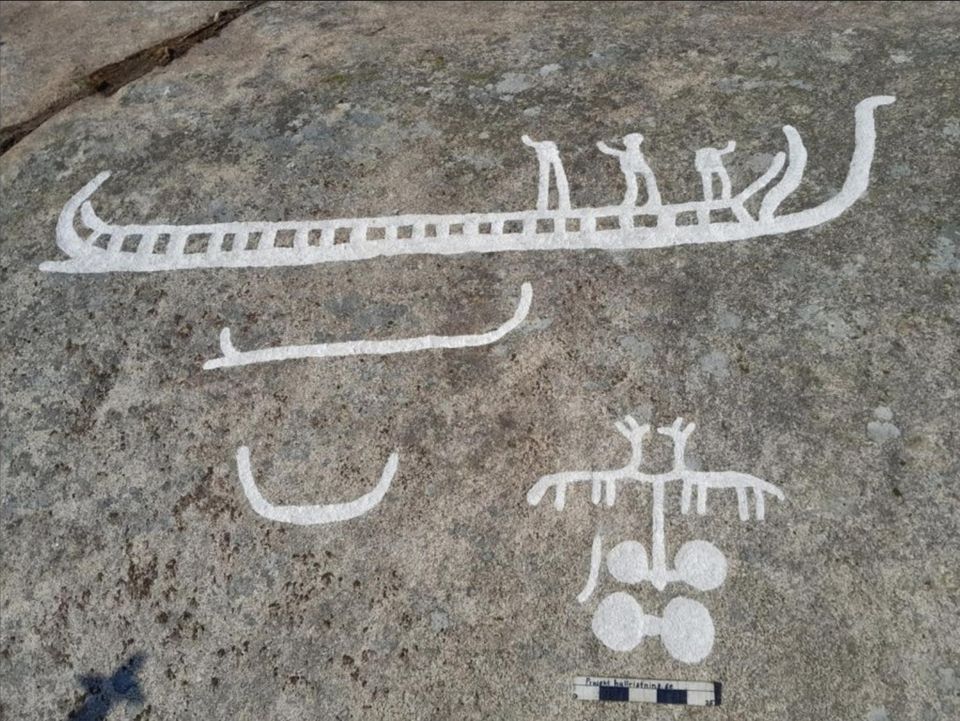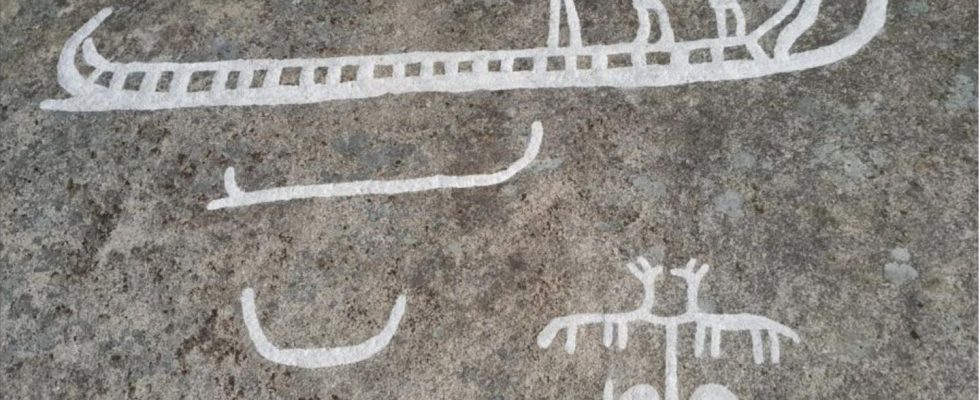archeology
Ships, people, horses: 2,700-year-old rock paintings discovered in Sweden
The stone symbols in the western Swedish province of Bohuslän
© Foundation for the Documentation of Bohuslän Rock Carvings
Scientists found around 40 petroglyphs in a steep granite rock in western Sweden. Maybe people wanted to tell a story with the symbols back then.
In many places around the world, people have long wanted to leave signs that they were once there. Cave paintings like those in Lascaux still amaze us to this day, the gigantic petroglyphs of Nazca, rock paintings by the Aborigines in Australia or the famous chalk paintings in England. In almost all cases, science today can only guess what the symbols were once supposed to say. They are impressive nonetheless. And also in northern Europe, in Sweden, so-called petroglyphs – signs scratched into stone – have now been found.
In the western Swedish province of Bohuslän, on the Baltic Sea coast, a steep cliff juts out of the ground. Around 2,700 years ago it was still in the sea, and for the people who lived nearby at the time it was probably even more difficult to reach than for archaeologists today, who in turn can only examine the rock face with the help of scaffolding. However, the effort is worth it: After rock drawings had already been discovered in Tanum, very close by, in 1994, archaeologists took another very thorough look at the rock formations on the coast this summer. And when someone removed some moss from the steep rock, scratch marks did appear that looked man-made.
Sweden: 2700 year old figures in the rock
After the first exciting discovery, it all happened in quick succession: the research team soon uncovered around 40 symbols. Due to the structure of the stone, they glow almost white and are very clearly visible once they have been freed from the centuries-old growth. According to the scientists, the scratch images are around 2700 years old, i.e. they were created a good 1500 years before the Viking age. The symbols show, among other things, ships, people and animals, possibly horses, and horse-drawn carriages.
archeology
300 coins in an amphora – the gold treasure of Como
What they are supposed to say can probably no longer be deciphered today. However, since certain symbols were depicted more frequently, the team has a theory: “Based on the repetition of motifs, one could assume that this collection of figures tells a story,” says researcher James Dodd in an interview with “Live Science”. However, this declaration only applies if the drawings were all created within a relatively short period of time. The team is now trying to find out.

Some of the symbols from the rock
© Foundation for the Documentation of Bohuslän Rock Carvings
Do the symbols tell a story?
A second possibility is that the symbols should indicate to strangers that the coast at this point is inhabited – and by whom. Because the rock once lay like an island in the sea, the white drawings should have been well seen by approaching sailors. However, this also means that the people who carved the petroglyphs in the stone had to put in a certain amount of effort. They must have worked either from a boat or in winter when the sea was frozen over at that point. Placing the symbols must have been important to them.
The most impressive picture is a boat about four meters long. So seafaring obviously started as early as 700 BC. BC played an important role for the people of western Sweden.


